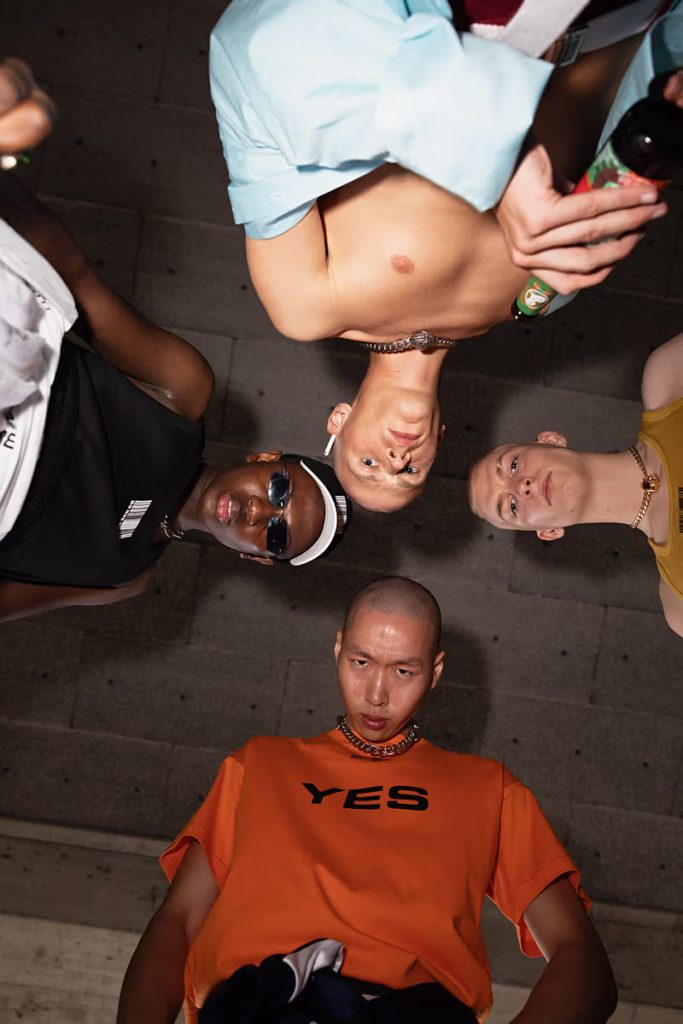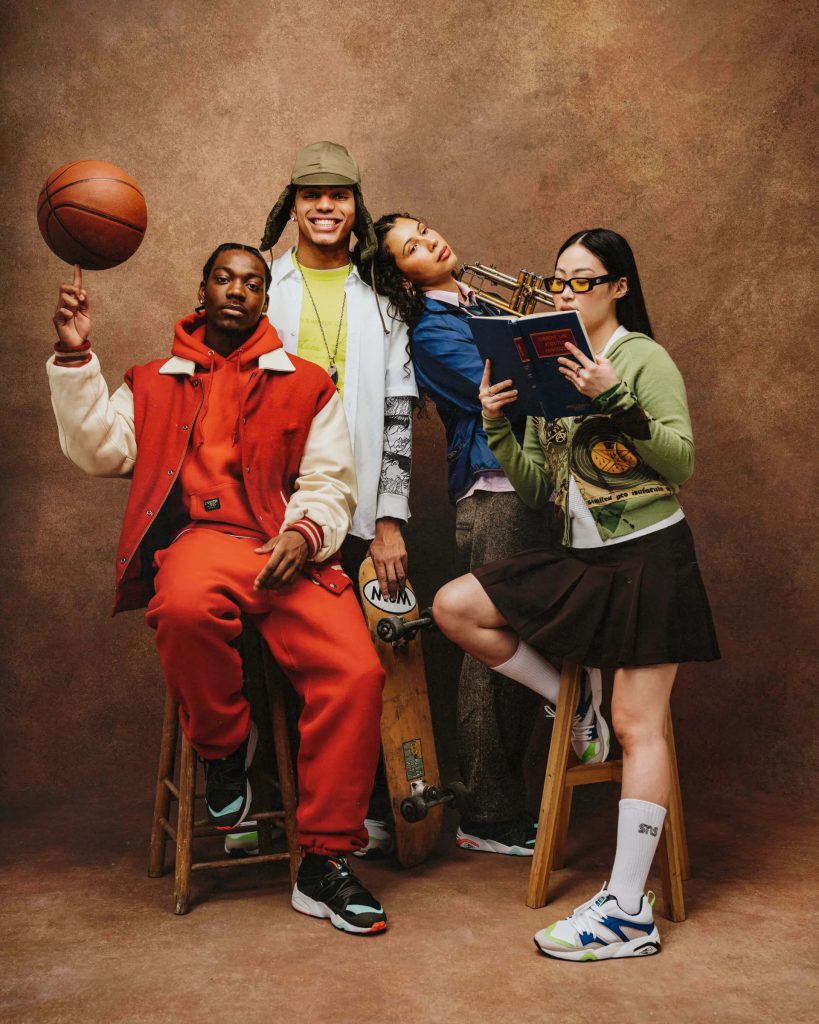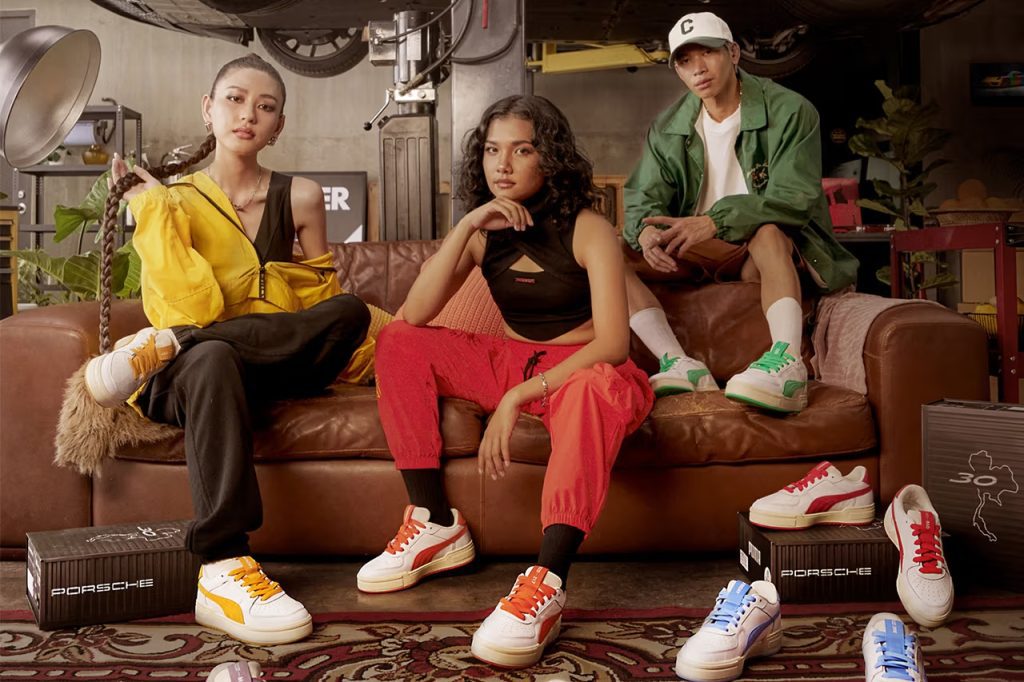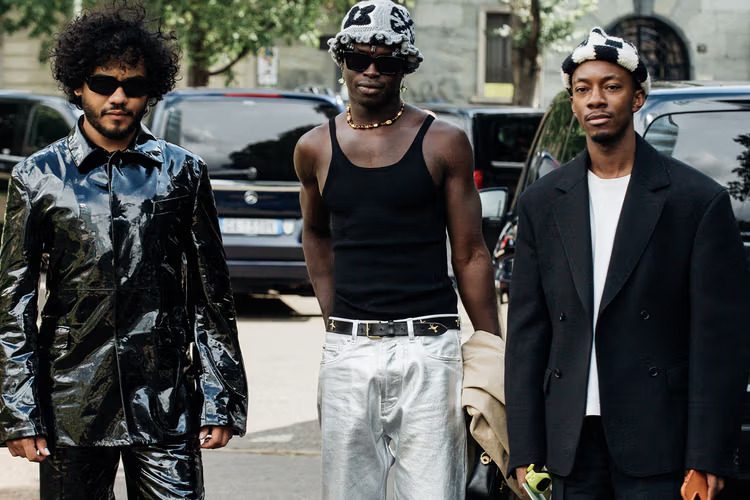

Photography by BRYAN ASEYA
Understanding the Hypebeast Phenomenon
Hypebeast culture has transcended its origins to become a pivotal element of modern fashion, blending streetwear’s casual essence with luxury’s exclusivity. Initially coined by the online platform Hypebeast, the term has grown to encompass individuals passionate about acquiring the latest and most exclusive streetwear, driving a culture centered around high-demand, limited-edition pieces.
What began as a niche community has exploded into a global phenomenon, with Hypebeast culture influencing not only fashion but also music, art, and lifestyle, reflecting a broader shift in societal values towards individualism and self-expression. Symbols of Hypebeast culture include coveted sneaker releases, collaboration pieces between streetwear brands and luxury fashion houses, and distinctive logos that signify membership within this exclusive community.
The Role of Social Media and Digital Platforms
Digital platforms have been instrumental in the rise of Hypebeast culture, serving as both a marketplace and a showcase for the latest trends. Influencers like Kanye West and Pharrell Williams have played a crucial role in popularizing streetwear, using their platforms to highlight key pieces and collaborations, thus shaping the trends within Hypebeast culture.
Social media, like Instagram and TikTok, have become vital for disseminating Hypebeast culture, with users showcasing their latest acquisitions and styling, influencing trends and demand. Online forums and communities offer a space for enthusiasts to discuss releases, share styling tips, and foster a sense of belonging within the Hypebeast community.
Collaborations and Brand Partnerships
Collaborations between streetwear brands and luxury fashion houses have become a hallmark of Hypebeast culture, creating a fusion of accessibility and exclusivity. Collaborations such as Supreme x Louis Vuitton have marked significant moments in Hypebeast history, blurring the lines between streetwear and high fashion and elevating the cultural status of both brands.
Limited edition releases, such as Adidas Yeezy sneakers, have become cultural events, with each release generating anticipation and excitement that enhances brand perception and loyalty. Sneaker culture is at the heart of Hypebeast fashion, with releases from brands like Nike and Adidas acting as cultural touchstones that signify one’s status within the community.
Consumer Behavior and Market Dynamics
The psychology behind the Hypebeast phenomenon reveals a complex interplay between desire, exclusivity, and identity. The frenzy around Hypebeast releases is driven by scarcity and the thrill of the chase, with consumers often willing to queue for hours or pay premium prices on the resale market.
The resale market has become an integral part of the Hypebeast economy, with platforms like StockX and Grailed facilitating the buying and selling rare pieces at inflated prices. The tension between exclusivity and accessibility defines Hypebeast culture, with brands strategically balancing limited releases to maintain desirability while expanding their audience.
Hypebeast and Cultural Identity
Hypebeast culture offers a lens to explore modern notions of identity, belonging, and cultural appropriation. Adopting Hypebeast fashion allows individuals to express their personal style and affiliations, signaling their belonging to a community that values exclusivity and innovation.
Hypebeast culture often navigates the fine line between cultural appropriation and appreciation, with brands and consumers alike being called to consider the origins and significance of the trends they adopt. The global reach of Hypebeast culture highlights its ability to transcend geographical and cultural boundaries, creating a worldwide community united by a shared passion for streetwear.
Challenges and Critiques of Hypebeast Culture
While Hypebeast culture has significantly impacted fashion and pop culture, it also faces criticism related to consumerism, sustainability, and authenticity. The consumerist nature of Hypebeast culture, with its focus on constantly acquiring new items, raises concerns about its environmental impact and the sustainability of such practices.
Critics of Hypebeast culture question the authenticity and originality of a movement heavily reliant on brand names and logos, suggesting a need for a more genuine expression of personal style. As awareness of environmental and ethical issues grows, there is potential for Hypebeast culture to evolve towards more sustainable practices and conscious consumerism.
The Future of Hypebeast in the Digital Age
Hypebeast culture is poised to continue evolving, influenced by emerging trends, technological advancements, and shifting consumer values. Emerging trends, such as integrating digital fashion and virtual clothing, are set to shape the future of Hypebeast culture, offering new avenues for expression and interaction.
Technological advancements, from augmented reality fittings to blockchain for authenticity verification, will likely profoundly impact how Hypebeast culture is experienced and consumed. As the community becomes more aware of their choices’ social and environmental implications, there is potential for Hypebeast culture to lead the way in fostering more inclusive and sustainable fashion practices.

Dreams in Colors collaboration, 2023

